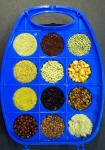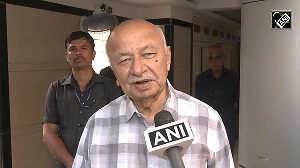Tea is the second most popular beverage in the world, after water. It is estimated that somewhere between 18 and 20 billion 6 oz. cups of tea are drunk daily on our planet.
An extension of numbers would indicate that the United States only imports enough tea annually to keep world usage rates going for 2 days.
India is the country with the most tea consumption in the world - an average of 651,000 metric tons per year.
Do you want to know how tea evolved over the centuries? If not, read on:
2737 BC: The Second Emperor, Shen Nung known as the Divine Healer first discovered tea in China.
350 AD: The first description of drinking tea is written in a Chinese dictionary.
400-600: The demand for tea rose steadily. Rather than harvest leaves from wild trees, farmers began to develop ways to cultivate tea. Tea was commonly made into roasted cakes, which were then pounded into small pieces and placed in a china pot. After adding boiling water, onion, spices, ginger or orange were introduced to produce many regional variations.
618-906: Tang Dynasty. Powdered tea became the fashion of the time. Nobility made it a popular pastime. Caravans carried tea on the Silk Road, trading with India, Turkey and Russia.
780: Poet Lu Yu wrote the first book of tea, making him a living saint, patronized by the Emperor himself. The book described methods of cultivation and preparation.
805: The Buddhist monk Saicho brought tea seeds to Japan from China.
960-1280: Sung dynasty. Tea was used widely. Powdered tea had become common. Beautiful ceramic tea accessories were made during this time. Dark-blue, black and brown glazes, which contrasted with the vivid green of the whisked tea, were favoured.
1101-1125: Emperor Hui Tsung wrote about the best ways to make whisked tea. A strong patron of the tea industry, he had tournaments in which members of the court identified different types of tea. Legend has it that he became so obsessed with tea he hardly noticed the Mongols who overthrew his empire. During his reign, teahouses built in natural settings became popular among the Chinese.
1191: Eisai Myoan, the monk who brought Zen Buddhism to Japan, returned from a trip to China with tea seeds, which he planted on the grounds of his temple near Kyoto. Eisai experimented with different ways to brew tea, finally adopting the Chinese whisked tea.
1206-1368: Yuan Dynasty. Genghis Khan and Kublai Khan conquered Chinese territories and established a Mongolian dynasty in power for more than a century. Tea became an ordinary drink, never regaining the high status it once enjoyed. Marco Polo was not even introduced to tea when he visited.
1368-1644: Ming Dynasty. People again began to enjoy tea. The new method of preparation was steeping whole leaves in water. The resulting pale liquid necessitated a lighter color ceramic than was popular in the past. The white and off-white tea-ware produced became the style of the time. The first Yixing pots were made at this time.
1422-1502: A Zen priest named Murata Shuko, who had devoted his life to tea, created the Japanese tea ceremony. The ceremony is called "Cha No Yu," which means "hot water for tea."
1610: The Dutch brought tea to Europe from China, trading dried sage in exchange.
1618: Chinese ambassadors presented Czar Alexis with a gift of several chests of tea.
1657: Tea was first sold in England at Garway's Coffee House in London. The East India Company operated out of several sites in the City of London, the first in Philpot Lane, Fenchurch, then it took a lease on Lord Northampton's mansion, Crosby Hall, Bishopsgate and then in 1658 another move before it finally leased Lord Craven's House in Leadenhall Street. Under the terms of a charter granted by Elizabeth I, The East India Company owned all trading rights and controlled the sale of those imported goods back to Britain.
1661: The Taiwanese began to drink wild tea.
1662: Charles II took Catherine Braganza of Portugal as his wife. They both drank tea, creating a fashion for it. Its popularity among the aristocracy causes alcohol beverages to fall from favour.
1669: Close to 150 pounds of tea were shipped to England. Until 1669, most of the tea drunk in Britain was bought from the Dutch.
1689: Traders with three hundred camels traveled 11,000 miles to China and back in order to supply Russia's demand. The trip took sixteen months.
1697: In Taiwan, settlers of Formosa's Nantou County cultivated the first domestic bushes. Dutch ships carried the tea to Persia, the first known export of Taiwanese tea.
1705: The yearly importation of tea to England grew to approximately 800,000 pounds.
1706: The first auction dedicated to tea took place in Craven House, which became known as East India House. These East India Company auctions were held quarterly. Such early auctions were "Sold by the Candle," a system whereby a candle was marked off in inches, it was lit when the bidding began, the hammer was brought down as the first inch line was reached and so on down the candle for each lot.
1710: Wealthy American Colonists developed a taste for tea.
1773: The Tea Act of 1773 giving the East India Company control of trading in the Americas imposed the same taxes and levies on the colonists as paid by the British. Objection led to an act of rebellion known as the Boston Tea Party in December 1773, which is commonly viewed as a first step towards the American War of Independence. Under cover of night, colonists dressed as Native Americans boarded the East India Company ships in Boston Harbor. They opened chests of tea and dumped their contents into the water. This was repeated in other less known instances up and down the coast.
1776: China was the main tea source of eighteenth century. Ceylon (now known as Sri Lanka), Central and Eastern African countries were sending teas to the London Auction.
1833: The East India Company enjoyed its monopoly for two and a half centuries. Independent merchants campaigned for change and modernization, which was achieved in 1833.
1834: An imperial edict from the Chinese Emperor closed all Chinese ports to foreign vessels until the end of the First Opium War in 1842.
Royal Assent was given to the Bill who rescinded the charter given to the East India Company; this came into force on 22nd, April 1834. The brokers began to look for new premises and found a dancing studio in Exchange Alley, City of London. In November 1834 the tea auctions were moved again to the newly built London Commercial Salesrooms, Mincing Lane and remained there until 30th January 1937 when they moved down the lane to Plantation House.
1840s: Clipper ships, built in America, sped-up the transportation of tea to America and Europe, livening the pace of trade. Some ships could make the trip from Hong Kong to London in ninety-five days. Races to London became commonplace; smugglers and blockade runners also benefited from the advances in sailing speeds.
1870: Twinings of England began to blend tea for consistency.
Tea companies began to blossom in Britain by the late nineteenth century blending, branding and packaging were giving the public a wide variety of choice.
1900: Trans-Siberian railroad made transport to Russia cheaper and faster. Java became an important producer as well.
At the beginning of the twentieth century, the London Tea Auction had grown in importance. Most working days of the week were allotted to a particular country's sale with minor suppliers being herded together on convenient days.
1904: Richard Blechynden created iced tea for the St. Louis World Fair.
1909: Thomas Sullivan invented tea bags in New York, sending tea to clients in silk bags, which they began to mistakenly steep without opening.
1910: Sumatra, Indonesia grows and exports tea. Soon thereafter, tea is grown in Kenya and other parts of Africa.
1918: A National Tea Control was brought in, tea was split into three grades and sold at a fixed retail price of two shillings and eight pence, the equivalent of three and a half modern pence.
1919: The London Tea Auction resumed on 5th May 1919.
1920-1930: The tea trade suffered a slump like most other industry in Britain. However the tea trade found export markets to fill the gap.
1940: As Britain recovered, so did the UK tea trade, but again the economy collapsed with World War II. In 1940 tea was rationed, this remained until October 1952.
1952: The London Tea Auction resumed and took place in Plantation House until it moved to Sir John Lyon House on 8th, February 1971. Since then the tea trade has seen the introduction of the off shore auction, tea sold by the container whilst on route for the UK and the growth of the producer countries' own auctions due to increased volumes.
1970: The Taiwanese government encouraged its population to drink tea, revitalising tea culture on the island.
1998: In the last twenty years the frequency of and volumes sold at the London Tea Auction have declined. In 1990 the auction moved to The London Chamber of Commerce where it closed in 1998.
2006: India is the country with the most tea consumption in the world - an average of 651,000 metric tons per year. China is second, and consumes about 463,000 metric tons per year. The United States is number one consumer of iced tea, with between 80% and 85% of our total tea consumed that way.






 © 2025
© 2025